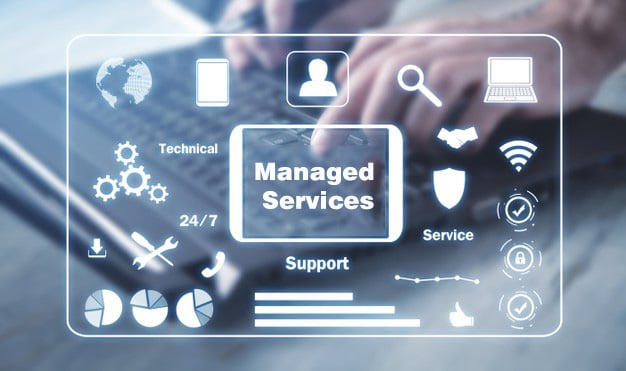
In the rapidly evolving digital landscape, businesses must stay ahead of technological advancements to maintain a competitive edge. A robust technology roadmap is crucial for navigating this dynamic environment. By leveraging Managed IT Services, organizations can significantly enhance their technology roadmap, ensuring they are well-prepared to meet current and future technological demands.
What is a Technology Roadmap?
A technology roadmap is a strategic plan that outlines the technological direction and initiatives of an organization. It serves as a blueprint for aligning IT initiatives with business goals, identifying key milestones, and allocating resources effectively. A well-structured roadmap ensures that technology investments are strategic, cost-effective, and future-proof.
The Role of Managed IT Services
Managed IT Services involve outsourcing IT management and support to a specialized provider. These services include network management, cybersecurity, cloud computing, data backup, and recovery, among others. Managed IT Services providers (MSPs) offer a comprehensive suite of solutions designed to optimize and secure IT infrastructure, allowing businesses to focus on core activities.
Benefits of Integrating Managed IT Services into Your Technology Roadmap
- Expertise and Innovation:
- MSPs bring a wealth of expertise and access to cutting-edge technologies. They stay abreast of industry trends and innovations, ensuring that your technology roadmap incorporates the latest advancements.
- Scalability and Flexibility:
- Managed IT Services provide scalable solutions that grow with your business. Whether you need to scale up during peak periods or downsize, MSPs offer the flexibility to adjust your IT resources accordingly.
- Cost Efficiency:
- Outsourcing IT services can lead to significant cost savings. MSPs operate on a subscription-based model, allowing you to predict and control IT expenses. This eliminates the need for substantial capital investments in IT infrastructure.
- Enhanced Security:
- Cybersecurity is a top priority for businesses today. MSPs offer robust security measures, including proactive monitoring, threat detection, and incident response. This ensures that your technology roadmap includes comprehensive security strategies to protect sensitive data.
- Proactive Maintenance and Support:
- MSPs provide continuous monitoring and maintenance of your IT systems. This proactive approach minimizes downtime, resolves issues before they escalate, and ensures optimal performance of your technology assets.
- Focus on Core Business Activities:
- By outsourcing IT management to a trusted MSP, your internal teams can focus on core business activities. This enhances productivity and allows you to allocate resources more effectively toward achieving business objectives.
Steps to Improve Your Technology Roadmap with Managed IT Services
- Assess Current Technology Landscape:
- Conduct a thorough assessment of your current IT infrastructure, identifying strengths, weaknesses, opportunities, and threats. This will provide a clear understanding of where improvements are needed.
- Define Business Goals and Objectives:
- Align your technology roadmap with your overall business goals. Identify key objectives and milestones that your technology initiatives should support.
- Partner with a Reputable MSP:
- Choose a Managed IT Services provider with a proven track record and expertise in your industry. Ensure they offer a comprehensive range of services tailored to your specific needs.
- Develop a Strategic Plan:
- Work with your MSP to develop a detailed technology roadmap. This should include timelines, resource allocation, and key performance indicators (KPIs) to measure progress.
- Implement and Monitor:
- Execute the technology roadmap with the support of your MSP. Continuously monitor progress, making adjustments as needed to stay on track and achieve desired outcomes.
- Review and Adapt:
- Regularly review your technology roadmap and assess its effectiveness. Adapt to changing business needs and technological advancements to ensure your roadmap remains relevant and effective.
Formal Technology Implementation Plan
Introduction
Implementing new technology within an organization requires careful planning and execution to ensure that the initiative is successful and aligns with the organization’s strategic goals. A well-structured Technology Implementation Plan serves as a blueprint for deploying IT services efficiently and effectively, minimizing disruptions, and maximizing return on investment.
Objective
The objective of this Technology Implementation Plan is to outline the steps necessary to integrate new IT services into the organization, ensuring that the deployment aligns with business objectives, meets user needs, and enhances overall operational efficiency.
Scope
This plan covers the entire process of implementing IT services, from initial assessment and planning to execution, monitoring, and review. It includes hardware, software, network infrastructure, and cybersecurity measures.
Key Components of the Technology Implementation Plan
- Assessment and Planning:
- Current State Analysis: Conduct a thorough analysis of the existing IT infrastructure to identify strengths, weaknesses, opportunities, and threats.
- Needs Assessment: Engage with stakeholders to understand their requirements and expectations from the new IT services.
- Goals and Objectives: Define clear, measurable goals and objectives that the implementation aims to achieve.
- Budgeting and Resource Allocation: Develop a detailed budget and allocate resources, including personnel, hardware, and software.
- Technology Selection:
- Vendor Evaluation: Assess potential vendors based on their offerings, reputation, support services, and cost.
- Proof of Concept (PoC): Conduct a PoC to validate the functionality and performance of the selected IT services.
- Contract Negotiation: Negotiate terms and conditions with the selected vendor to ensure favorable outcomes for the organization.
- Implementation Planning:
- Project Team Formation: Assemble a project team with clearly defined roles and responsibilities.
- Timeline Development: Create a detailed project timeline with key milestones and deadlines.
- Risk Management: Identify potential risks and develop mitigation strategies to address them.
- Execution:
- Infrastructure Preparation: Ensure that the necessary hardware and network infrastructure are in place and configured correctly.
- Software Installation and Configuration: Install and configure the software components of the IT services.
- Data Migration: Plan and execute data migration activities to transfer existing data to the new system without data loss or corruption.
- User Training: Develop and conduct training sessions for end-users to ensure they are comfortable and proficient with the new IT services.
- Testing and Quality Assurance:
- System Testing: Conduct comprehensive testing to verify that the IT services are functioning as expected.
- User Acceptance Testing (UAT): Engage end-users in testing to ensure the system meets their needs and expectations.
- Issue Resolution: Address any issues or bugs identified during testing promptly.
- Deployment:
- Go-Live Preparation: Prepare for the transition to the new IT services, including final data migration and system checks.
- Go-Live: Deploy the IT services in the production environment.
- Post-Go-Live Support: Provide immediate support to address any issues that arise after deployment.
- Monitoring and Evaluation:
- Performance Monitoring: Continuously monitor the performance of the IT services to ensure they meet the defined objectives.
- Feedback Collection: Gather feedback from users to identify areas for improvement.
- Performance Review: Conduct regular reviews to assess the effectiveness of the IT services and make necessary adjustments.
- Documentation and Reporting:
- Documentation: Maintain detailed documentation of the implementation process, including configurations, procedures, and troubleshooting guides.
- Reporting: Provide regular reports to stakeholders on the progress and outcomes of the implementation.
Integrating Managed IT Services into your technology roadmap can significantly enhance your organization’s technological capabilities. By leveraging the expertise, scalability, and security offered by MSPs, you can develop a robust and future-proof technology roadmap that aligns with your business goals. Embrace Managed IT Services to navigate the complexities of the digital age and drive your business toward sustained success.


